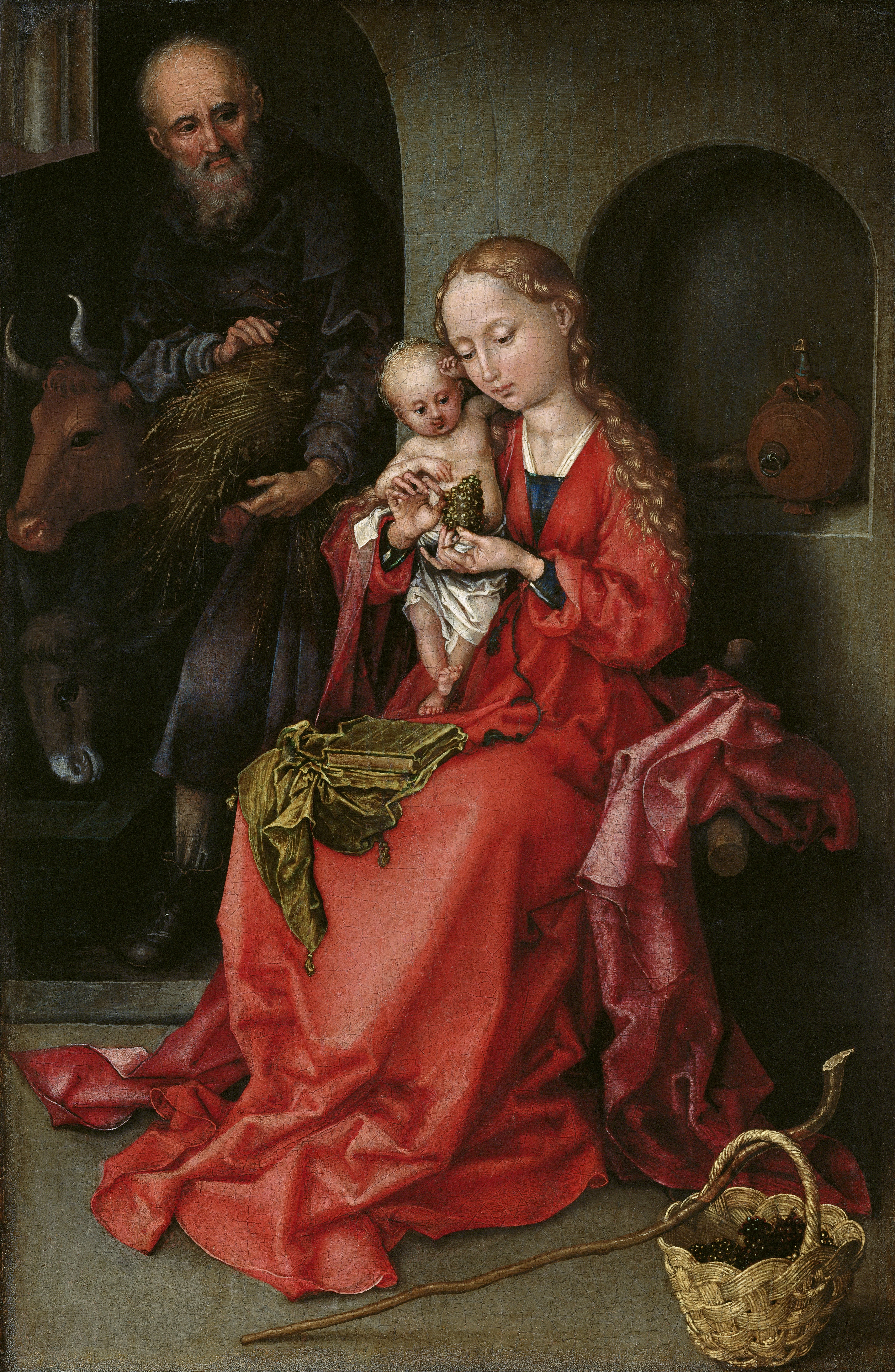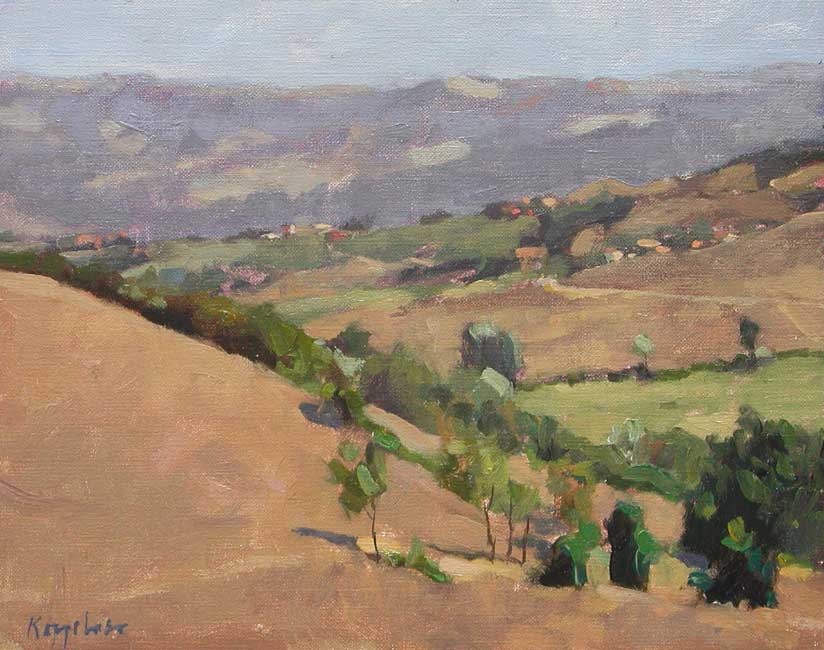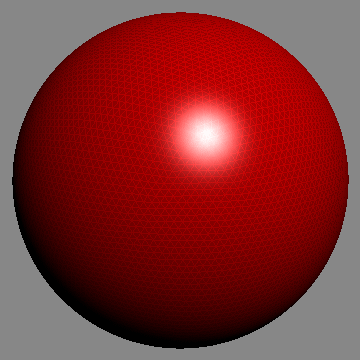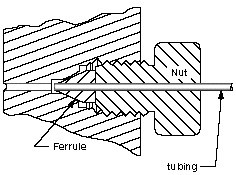|
Hatching
Hatching () is an artistic technique used to create tonal or shading effects by drawing (or painting or scribing) closely spaced parallel lines. When lines are placed at an angle to one another, it is called cross-hatching. Hatching is also sometimes used to encode colours in monochromatic representations of colour images, particularly in heraldry. Hatching is especially important in essentially linear media, such as drawing, and many forms of printmaking, such as engraving, etching and woodcut. In Western art, hatching originated in the Middle Ages, and developed further into cross-hatching, especially in the old master prints of the fifteenth century. Master ES and Martin Schongauer in engraving and Erhard Reuwich and Michael Wolgemut in woodcut were pioneers of both techniques, and Albrecht Dürer in particular perfected the technique of crosshatching in both media. Artists use the technique, varying the length, angle, closeness and other qualities of the lines, ... [...More Info...] [...Related Items...] OR: [Wikipedia] [Google] [Baidu] |
Hatching (heraldry)
Hatching (sometimes called ''hachure'', from the French word) is a conventional system for monochrome denotation of heraldry, heraldic armory, whereby the tincture (heraldry), tinctures (colours) are represented by dots and lines. This technique is employed in cases where colours, for either aesthetic, practical or economic reasons are not reproduced – e.g. on surfaces such as woodcuts or engravings, seal (emblem), seals and coins. Several systems of hatchings were developed during the Renaissance as an alternative to tricking, the earlier method of indicating heraldic tinctures by use of written abbreviations. The present day hatching system was developed during the 1630s by Silvester Petra Sancta and Marcus Vulson de la Colombière. Some earlier hatching methods were also developed, but did not come into wide use. Tricking is an alternative method which has the same purpose as hatching. Conventional system Genesis Hatching developed as a method of screening used by Ren ... [...More Info...] [...Related Items...] OR: [Wikipedia] [Google] [Baidu] |
Drawing
Drawing is a Visual arts, visual art that uses an instrument to mark paper or another two-dimensional surface, or a digital representation of such. Traditionally, the instruments used to make a drawing include pencils, crayons, and ink pens, sometimes in combination. More modern tools include Stylus (computing), computer styluses with graphics tablets and gamepads in Virtual reality, VR drawing software. A drawing instrument releases a small amount of material onto a surface, leaving a visible mark. The most common support for drawing is paper, although other materials, such as Paperboard, cardboard, vellum, wood, plastic, leather, canvas, and Lumber, board, have been used. Temporary drawings may be made on a blackboard or whiteboard. Drawing has been a popular and fundamental means of public expression throughout human history. It is one of the simplest and most efficient means of communicating ideas. The wide availability of drawing instruments makes drawing one of the most comm ... [...More Info...] [...Related Items...] OR: [Wikipedia] [Google] [Baidu] |
Engraving
Engraving is the practice of incising a design on a hard, usually flat surface by cutting grooves into it with a Burin (engraving), burin. The result may be a decorated object in itself, as when silver, gold, steel, or Glass engraving, glass are engraved, or may provide an Intaglio (printmaking), intaglio printing plate, of copper or another metal, for printing images on paper as prints or illustrations; these images are also called "engravings". Engraving is one of the oldest and most important techniques in printmaking. Wood engravings, a form of relief printing and stone engravings, such as petroglyphs, are not covered in this article. Engraving was a historically important method of producing images on paper in artistic printmaking, in mapmaking, and also for commercial reproductions and illustrations for books and magazines. It has long been replaced by various photographic processes in its commercial applications and, partly because of the difficulty of learning the techni ... [...More Info...] [...Related Items...] OR: [Wikipedia] [Google] [Baidu] |
Master ES
Master E. S. (; previously known as the ''Master of 1466'') is an unidentified German engraver, goldsmith, and printmaker of the late Gothic period. He was the first major German artist of old master prints and was greatly copied and imitated. The name assigned to him by art historians, ''Master E. S.'', is derived from the monogram, E. S., which appears on eighteen of his prints (variants appear on others). The title, Master, is used for unidentified artists who operated independently. He was probably the first printmaker to place his initials on his work. Remaining signed works by E. S. indicate that he was active in printmaking from 1450 to 1467, the latest date to appear on one of his prints. After this date, he is presumed to have died. He was the most distinguished German engraver before Martin Schongauer. Life Master E. S. probably came from southwestern Germany or Switzerland, as did the engraver called the Master of the Playing Cards. This view rests mainly on ... [...More Info...] [...Related Items...] OR: [Wikipedia] [Google] [Baidu] |
Woodcut
Woodcut is a relief printing technique in printmaking. An artist carves an image into the surface of a block of wood—typically with gouges—leaving the printing parts level with the surface while removing the non-printing parts. Areas that the artist cuts away carry no ink, while characters or images at surface level carry the ink to produce the print. The block is cut along the wood grain (unlike wood engraving, where the block is cut in the end-grain). The surface is covered with ink by rolling over the surface with an ink-covered roller ( brayer), leaving ink upon the flat surface but not in the non-printing areas. Multiple colours can be printed by keying the paper to a frame around the woodblocks (using a different block for each colour). The art of carving the woodcut can be called ''xylography'', but this is rarely used in English for images alone, although that term and ''xylographic'' are used in connection with block books, which are small books containing text ... [...More Info...] [...Related Items...] OR: [Wikipedia] [Google] [Baidu] |
Old Master Print
An old master print (also spaced masterprint) is a work of art produced by a printing process within the Western tradition (mostly by Old Masters). The term remains current in the art trade, and there is no easy alternative in English to distinguish the works of "fine art" produced in printmaking from the vast range of decorative, utilitarian and popular prints that grew rapidly alongside the artistic print from the 15th century onwards. Fifteenth-century prints are sufficiently rare that they are classed as old master prints even if they are of crude or merely workmanlike artistic quality. A date of about 1830 is usually taken as marking the end of the period whose prints are covered by this term. The main techniques used, in order of their introduction, are woodcut, engraving, etching, mezzotint and aquatint, although there are others. Different techniques are often combined in a single print. With rare exceptions printed on textiles, such as silk, or on vellum, old master print ... [...More Info...] [...Related Items...] OR: [Wikipedia] [Google] [Baidu] |
Martin Schongauer
Martin Schongauer (c. 1450–53, Colmar – 2 February 1491, Breisach), also known as Martin Schön ("Martin beautiful") or Hübsch Martin ("pretty Martin") by his contemporaries, was an Alsatian engraver and painter. He was the most important printmaker north of the Alps before Albrecht Dürer, a younger artist who collected his work. Schongauer is the first German painter to be a significant engraver, although he seems to have had the family background and training in goldsmithing which was usual for early engravers. The bulk of Schongauer's surviving production is 116 engravings, all with his monogram but none dated, which were well known not only in Germany, but also in Italy and even made their way to England and Spain. Vasari says that Michelangelo copied one of his engravings, in the '' Trial of Saint Anthony''. His style shows no trace of Italian influence, but a very clear and organised Gothic, which draws from both German and Early Netherlandish painting. Recent ... [...More Info...] [...Related Items...] OR: [Wikipedia] [Google] [Baidu] |
Technical Drawing
Technical drawing, drafting or drawing, is the act and discipline of composing drawings that visually communicate how something functions or is constructed. Technical drawing is essential for communicating ideas in industry and engineering. To make the drawings easier to understand, people use familiar symbols, perspectives, units of measurement, notation systems, visual styles, and page layout. Together, such conventions constitute a visual language and help to ensure that the drawing is unambiguous and relatively easy to understand. Many of the symbols and principles of technical drawing are codified in an international standard called ISO 128. The need for precise communication in the preparation of a functional document distinguishes technical drawing from the expressive drawing of the visual arts. Artistic drawings are subjectively interpreted; their meanings are multiply determined. Technical drawings are understood to have one intended meaning. A draftsman is ... [...More Info...] [...Related Items...] OR: [Wikipedia] [Google] [Baidu] |
List Of Art Techniques
There is no exact definition of what constitutes art. Artists have explored many styles and have used many different techniques to create art. Art techniques A * Airbrush#Technique, Airbrushing technique * Aerial_perspective#In_art, Aerial perspective technique * Acrylic painting techniques * Aging (artwork), Aging (artwork) technique * Aquatint * Assemblage (art), Assemblage (art) technique * Animation (digital art) B * Basse-taille, Basse-taille enameling technique * Burnishing (pottery), Burnishing * Freehand brush work C * Camaïeu, Camaïeu technique * Cast paper * Ceramic forming techniques * Cerography * Champlevé * Chiaroscuro, Chiaroscuro technique * Cloisonné * Collage * Contour drawing, Contour drawing technique * Contour rivalry * Hatching, Crosshatching D * Dalle de verre * Décollage, Décollage technique * Digital painting, Digital painting technique * Distressing, Distressing technique * Divisionism, Divisionism technique * Drip painting * Droste effec ... [...More Info...] [...Related Items...] OR: [Wikipedia] [Google] [Baidu] |
Shading
Shading refers to the depiction of depth perception in 3D models (within the field of 3D computer graphics) or illustrations (in visual art) by varying the level of darkness. Shading tries to approximate local behavior of light on the object's surface and is not to be confused with techniques of adding shadows, such as shadow mapping or shadow volumes, which fall under global behavior of light. In drawing Shading is used traditionally in drawing for depicting a range of darkness by applying media more densely or with a darker shade for darker areas, and less densely or with a lighter shade for lighter areas. Light patterns, such as objects having light and shaded areas, help when creating the illusion of depth on paper. There are various techniques of shading, including cross hatching, where perpendicular lines of varying closeness are drawn in a grid pattern to shade an area. The closer the lines are together, the darker the area appears. Likewise, the farther apart the lin ... [...More Info...] [...Related Items...] OR: [Wikipedia] [Google] [Baidu] |
Erhard Reuwich
Erhard Reuwich () was a Dutch artist, as a designer of woodcuts, and a printer, who came from Utrecht but then worked in Mainz. His dates and places of birth and death are unknown, but he was active in the 1480s. He came from a family of painters in Utrecht, and his father may have been Hildebrand Reuwich, who was Dean of the painters' guild there in 1470. He traveled on a pilgrimage to Jerusalem, which gave rise to his most famous work. It has been suggested that he was the Master of the Housebook, but this has not been generally accepted. Perhaps more likely is his identification as an engraver known as the ''Master of the Book of Reason''. ''Peregrinatio in Terram Sanctam'' The ''Peregrinatio in Terram Sanctam'' or ''Sanctae Peregrinationes'', an incunabulum account of a pilgrimage to Jerusalem, by Bernhard von Breydenbach, was published in 1486, with the illustrations drawn by Reuwich. Breydenbach was a wealthy canon of Mainz Cathedral who made the pilgrimage in 1483–1 ... [...More Info...] [...Related Items...] OR: [Wikipedia] [Google] [Baidu] |
Cross Section (geometry)
In geometry and science, a cross section is the non-empty intersection (set theory), intersection of a solid body in three-dimensional space with a Plane (geometry), plane, or the analog in higher-dimensional spaces. Cutting an object into slices creates many parallel cross-sections. The boundary of a cross-section in three-dimensional space that is parallel to two of the Cartesian coordinate system, axes, that is, parallel to the plane determined by these axes, is sometimes referred to as a contour line; for example, if a plane cuts through mountains of a raised-relief map parallel to the ground, the result is a contour line in two-dimensional space showing points on the surface of the mountains of equal elevation. In technical drawing a cross-section, being a Planar projection, projection of an object onto a plane that intersects it, is a common tool used to depict the internal arrangement of a 3-dimensional object in two dimensions. It is traditionally crosshatched with th ... [...More Info...] [...Related Items...] OR: [Wikipedia] [Google] [Baidu] |











